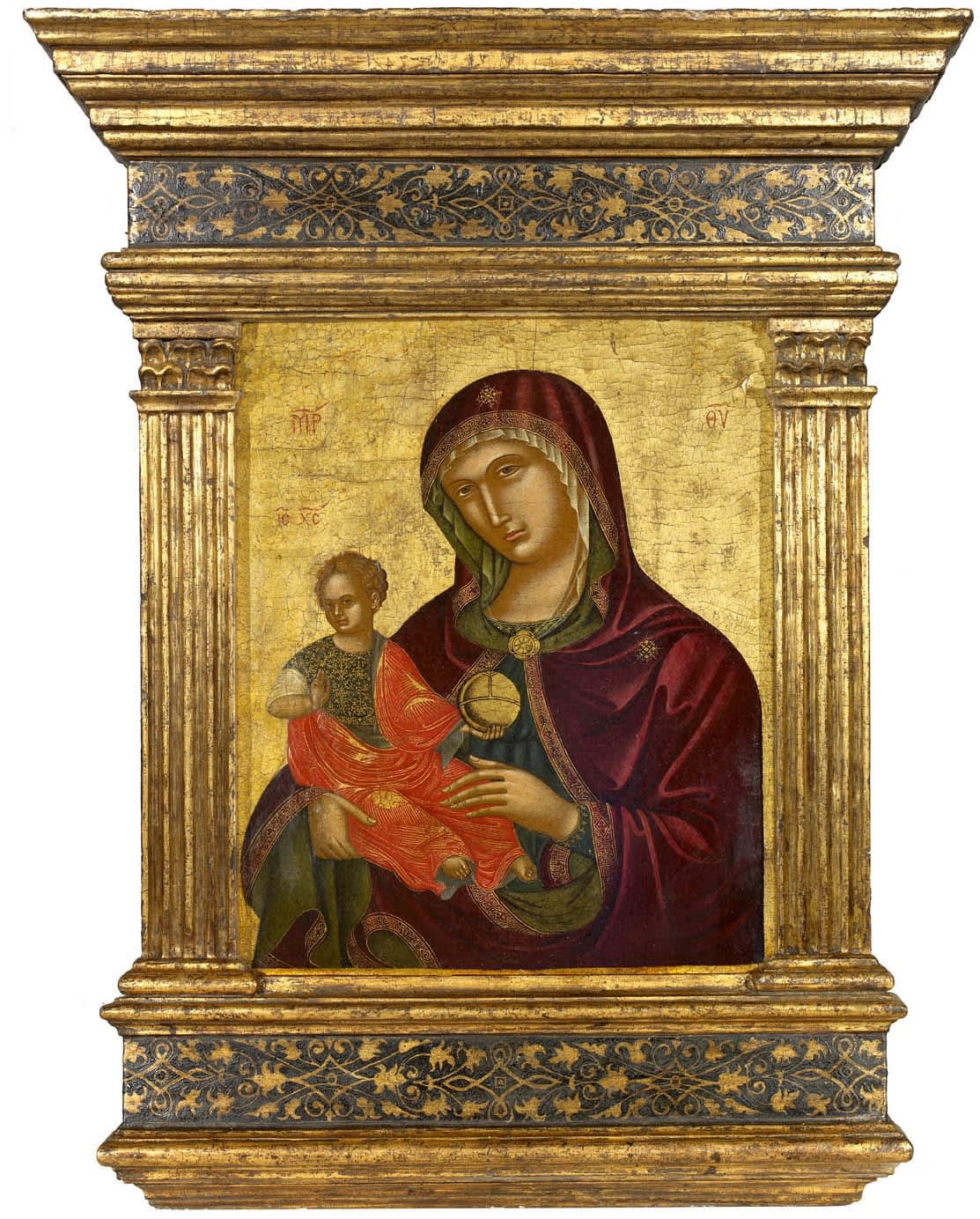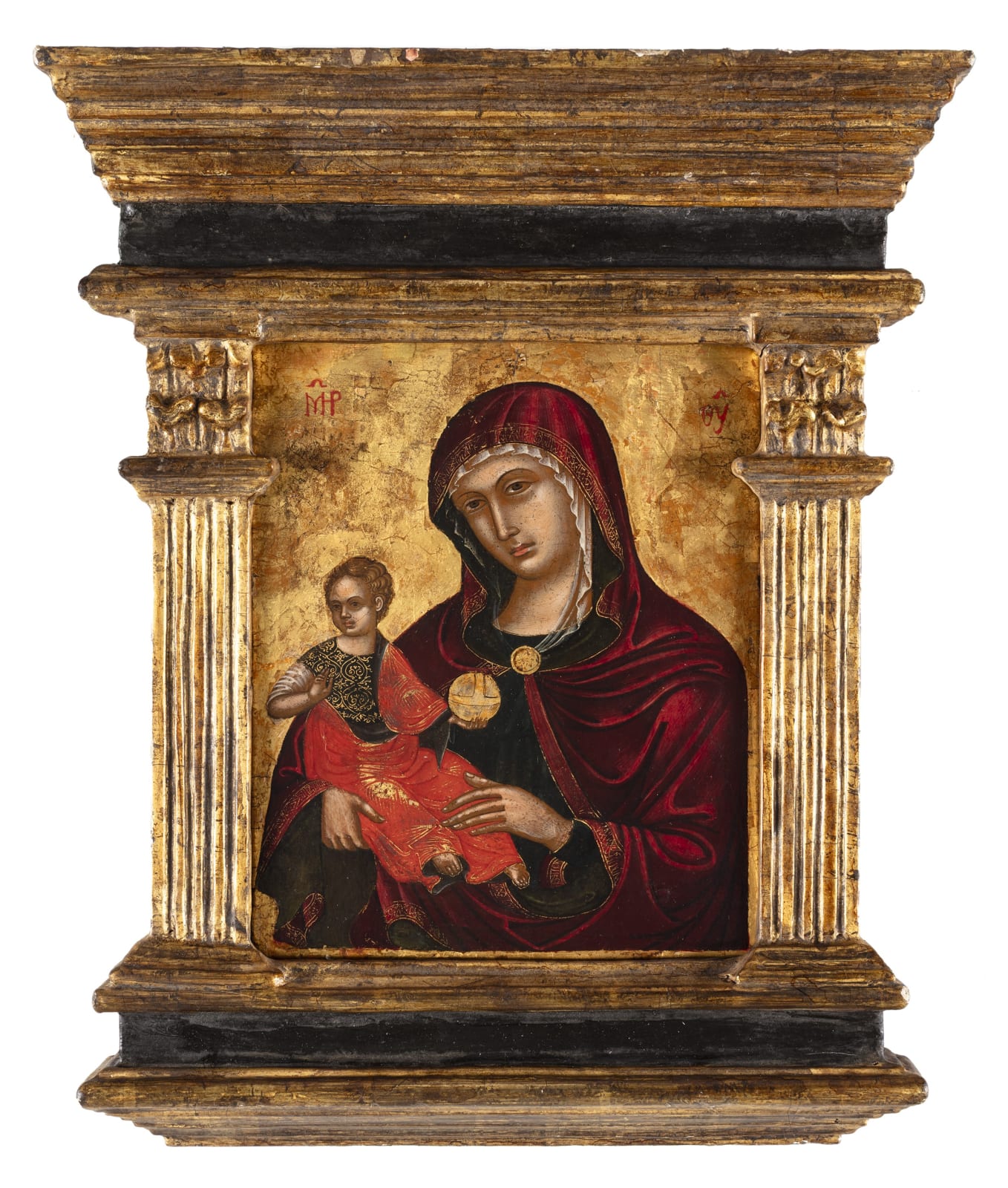I) Nikolaos Tzafouris, Madre dela Consolazione Icon, Crete, late 15th century, tempera and gold on gesso and wood, 49.5 x 40.5 cm. Inv. 1372
II) Nikolaos Tzafouris, Madre dela Consolazione Icon, Crete, late 15th century, tempera and gold on gesso and wood, 20.5 x 17 cm. Inv. 3098
Inscription: MP ΘY Meter Theou - 'Mother of God'
Both of these icons depict a of Mother of God type which appeared in Cretan icon-painting towards the end of the 15th century. Known as the Madre della Consolazione (Mother of Consolation) the Virgin is depicted at half length, wearing a blue robe and a dark red mantle with a green lining, which is drawn up over her shoulders to cover her head. The mantle is drawn together at her chest and held in place by a large gold brooch, which on the larger of the two icons is decorated with a star. Both mantles are decorated with two gold stars on the in the areas that cover the Virgin's left shoulder and the top of her head, and a pseudo-Kufic script which adorns the edges. In her right arm she holds the Christ Child who wears a green robe and a red mantle with striations. He holds a golden orb in his hand, representing the world.
This iconographic type is often distinguished by scholars from other icon models prevalent at the time as having a strong Italian influence (notably in the use of a diaphanous veil for the Virgin rather than a cap or bonnet), and it is often agreed that it likely relied on an Italian prototype (Temple, 2010). Indeed, both icons in the Wyvern Collection are attributed to the Cretan born painter Nikolaos Tzafouris (1455-1501), who travelled to Venice to complete his artistic training. Perhaps here being exposed to the works of Giovanni Bellini and possibly even training in his workshop. Tzafouris later returned to Crete (then known as Candia and part of the Venetian republic) and established a successful workshop.
As Maria Vassilaki has highlighted Icons of the Madre della Consolazione were a highly popular product of Venetian Crete owing to their ability to appeal to both Orthodox and Catholic clients. Commissioners would specify whether they wanted their icons painted in 'forma Greca and alla Greca' (Byzantine iconography) or in 'forma Latina and alla Latina' (western iconography) with Cretan painters like Tzafouris able to produce them in either manner. In the two Wyvern examples the drastically differing sizes could imply differing uses, one for more private and personalised devotional activities and the other for a more public setting or placement above an alter.


